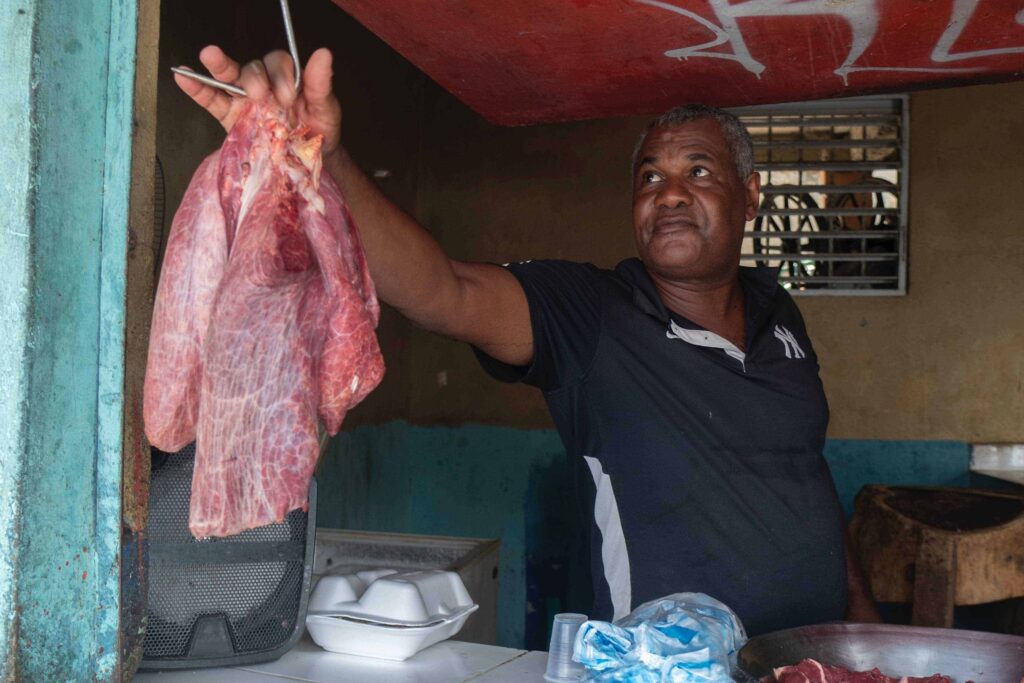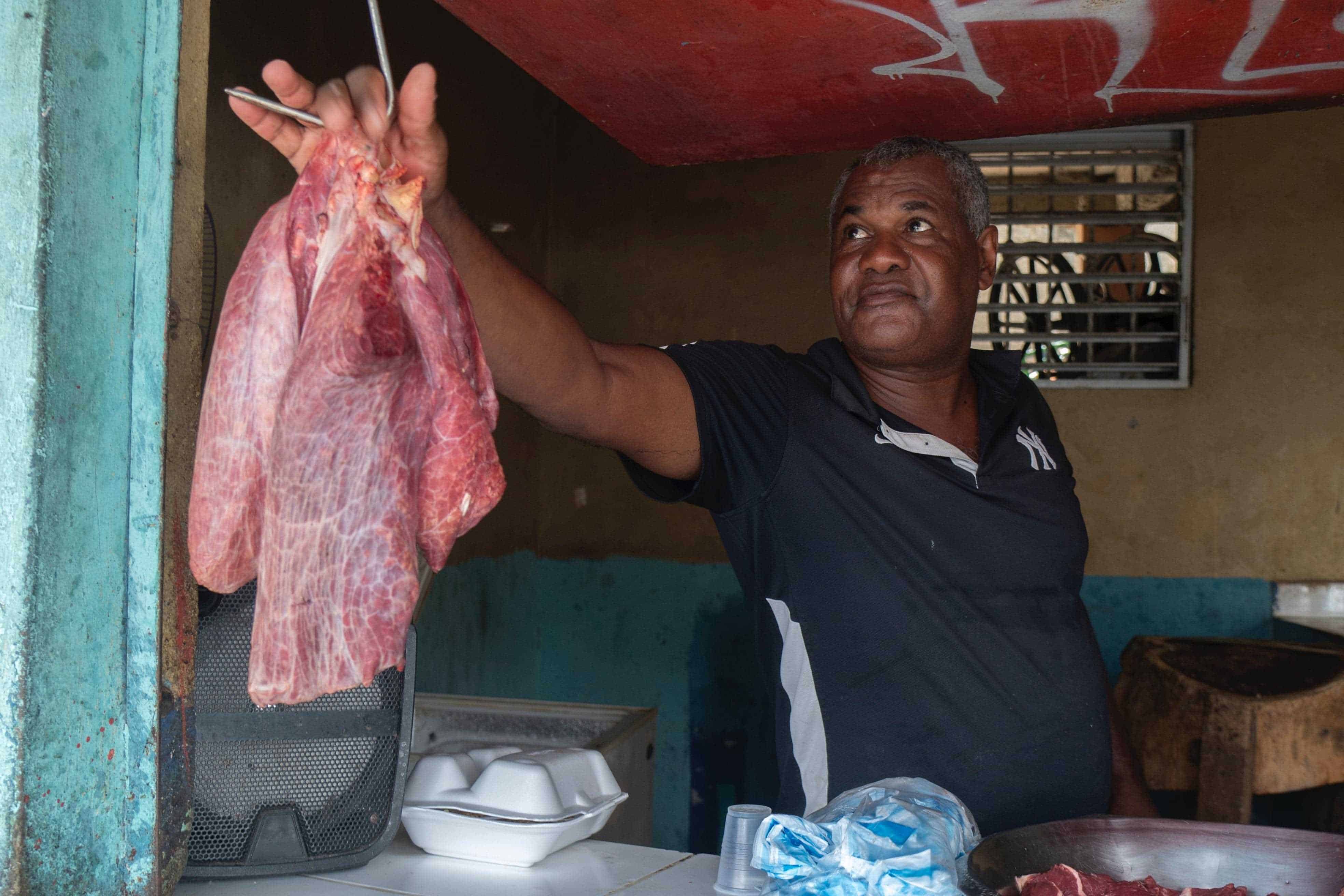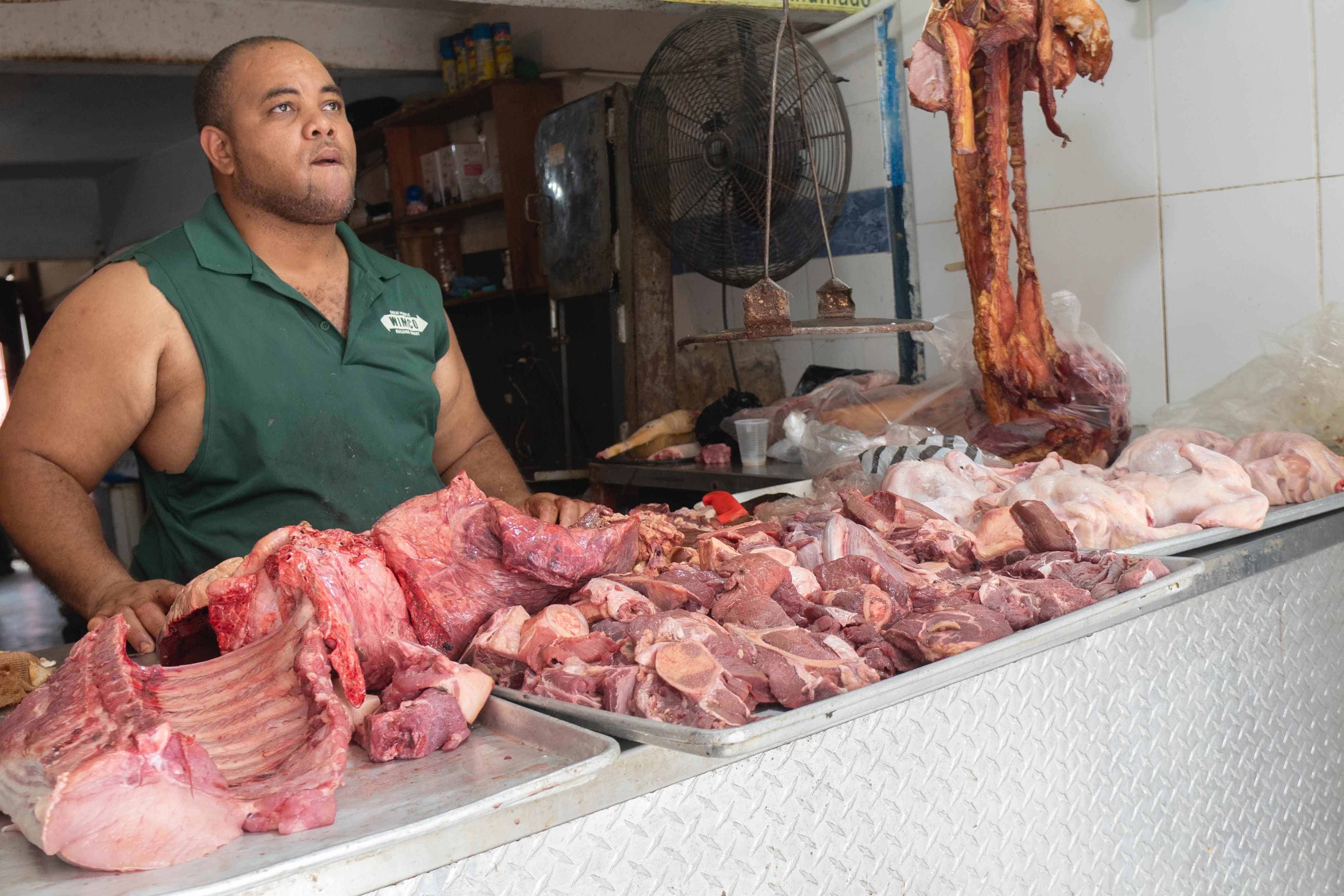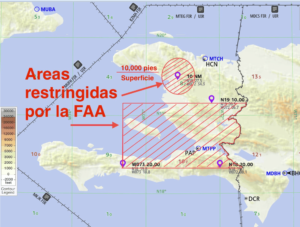
In Santo Domingo there are fewer and fewer butcher shopsPreviously, in each neighborhood there were one or two of these establishments, characterized by offering fresh meat, but now the trade is being lost.
Young Dominicans generally buy meat in supermarkets. And, at a general level, social inequality is also evident in the way in which food is bought, sold and used. business that sell this product.
The New Market of the National District is surrounded by improvised food stalls. The vendors, who offer all kinds of foodare placed on small wooden structures to offer their products. Some place them on the floor. Inside, noisy corridors, busy with people, motors and people carrying things, lead in all directions. One of these corridors leads to the meat stalls.
José Báez serves one lit by a light bulb. There is a smell of fresh meat, specifically beef and pork. Báez explains to Free Newspaper: “People are not buying lamb or goat because they are too expensive.”
At the nearby food stand, Franklin Vélez confirms this theory: “It’s been years since goat was sold here. Goat is sold on the avenue.”
However, there must be goat and lamb somewhere. A man explains that this meat is sold a few aisles down the road, in a certain store.
There Alicia is, standing. The establishment has not yet opened, there are only a few minutes left for the owner to arrive and the shutters are down. However, she explains that “Dominicans hardly buy goat.” “It is sold at a very high price; only Haitians buy it.”
In another part of the city is the Mercado Modelo. Here, meat is not sold inside. The interior is reserved for art, tourist objects and Santeria. It is outside that the butchers are found.
Ramón Hernández is one of the owners of one of the butcher shopsHe has big, strong hands, the kind of people who have spent years handling and cutting all kinds of raw meat. When asked about the shortage of goat, he agrees with other merchants: “It’s too expensive.”
“During seasons like Christmas, people buy more. Haitians buy more goat because they eat that as part of their culture.”
Hernández handles the knife with agility and runs a butcher shop that looks humble from the outside. It consists of a wooden table, meat hanging on the counter and an assistant. However, in some back rooms he hides more than four freezers with all kinds of meat. His business is undoubtedly doing well.
He sells lamb and goat for 300 pesos per pound. Beef for 210 pesos per pound. Next to him, a man cuts up chickens. He says his offer is 85 pesos per pound.
The craft is being lost
The butcher shops The most common businesses in the neighbourhoods are those that are disappearing. There are fewer and fewer of them. Before, years ago, you could find one or two in each neighbourhood. Now, however, there are not many who have that business.
On Prolongación Venezuela Street there is a butcher shop called La Bendición. It consists of a small room with a counter to serve customers. Víctor Ventura is in charge of running the business. “My father was a butcher and that’s what he taught me. Young people today don’t do what their parents taught them.”he explains, trying to make sense of the lack of butchers.

In his view, the trade is being lost because “prices are high and because there are fewer butchers who know how to sell meat.” This view is confirmed by Daniel Núñez, owner of another butcher shop on Hugo Chávez Street: “Not everyone knows how to do this. People are now doing other things.”
They sell a pound of beef for 175 pesos and a pound of pork for 125. Cheaper than in the market.

Ventura, when asked about the reduction in the number of butcher shopsexplains that supermarkets are not to blame: “The butcher’s customer is different from the supermarket customer. That is not the problem.”
The supermarkets They offer competitive prices
Supermarkets do not sell as much fresh meat as butcher shopsbut their prices are competitive, so many consumers choose to buy here and not at specialized stalls.
Chicken, for example, is sold at 80 pesos per pound in a large chain. Beef, on the other hand, is a little more expensive than in the markets. It is sold at 280 pesos per pound. Goat maintains its high price of 300 pesos per pound, just like in the market.
The meat “of the rich”
On Max Henríquez Ureña Avenue there is a butcher shop aimed at upper-class people. It has been in business for six years. Among other things, it imports meat from the United States. Its quality standards are high. One of its workers says: “We sell to the country’s upper class, we don’t usually sell to wage earners.”
There is an explanation for this: the prices are very high because the quality and presentation are better. A pound of veal costs 920 pesos. A pound of Creole veal costs 735 pesos. A pound of lamb costs 1,900 pesos.
It is also a restaurant. They have tables set up for those who want to taste the meat in the establishment. Here, a group of four people wait for their food to be brought to them. They also offer wines and kitchen utensils, such as grills or barbecues. Of course, it is not a place that is within the reach of all Dominicans’ pockets.
So, buying meat in Santo Domingo is possible. Not in the way it used to be, when prices were lower and goat was more affordable. Nor on every corner of every neighborhood, because the profession is dying out. Fewer and fewer Dominicans are interested in becoming butchers.




